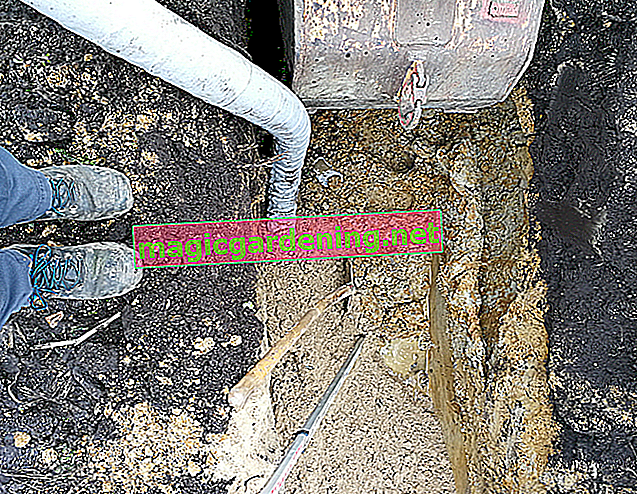
Why drainage is useful against waterlogging
Waterlogging in the flower pot causes the plants to die off. The water cannot drain off during watering or after a downpour, it fills all the cavities in the pot and floods the entire potting soil. The roots of the flower can no longer breathe, they die and rot. Since the plant is hanging upside down, this can be interpreted as a sign of insufficient water, so watering and making the condition worse rather than remedying it.
A good remedy against waterlogging is the drainage in the flower pot.
also read
- A drainage in a flower pot without a drainage hole
- Make a suspension for a flower pot yourself
- A brilliant irrigation for the flower pot
The drainage against waterlogging
To avoid waterlogging in the planter, you must first ensure that there are one or more drainage holes in the planter. So that the holes do not become clogged with soil, drainage is laid before the potting soil is introduced.
Material for a drainage
There are several options for good drainage results:
- Expanded clay
- a pottery shard
- Pebbles
- Pumice
Sand is not a good material for drainage as it does not create cavities through which the water can drain.
Put a drainage in the flower pot
Drainage is only effective if there are one or more drainage holes in the planter. In this way, the excess irrigation or rainwater can run off unhindered. Drainage is helpful so that no soil is washed out when it drains and the hole is blocked.
- First, place a pot of pottery or a thick pebble on the drain hole. Here you can easily recycle old or broken pots.
- Then fill in an approximately 2 to 3 cm thick layer of expanded clay, (€ 17.50 at Amazon *) gravel or broken glass. Note that the weight of the pot increases significantly with gravel and broken glass.
- Place a correspondingly large piece of fleece on the drainage layer as a cover. The fleece serves as protection from soil and filters the water that runs off. This prevents the cavities in the drainage from becoming clogged. Repotting is also made easier because the potting soil does not mix with the drainage.








